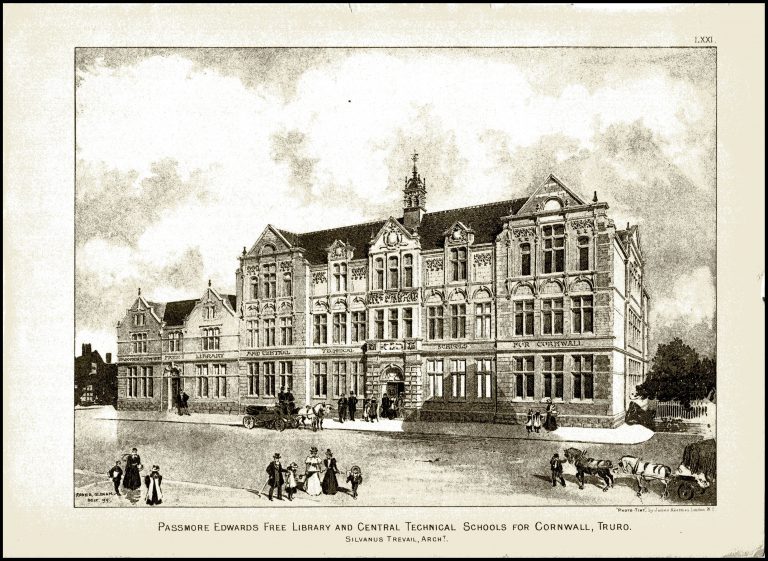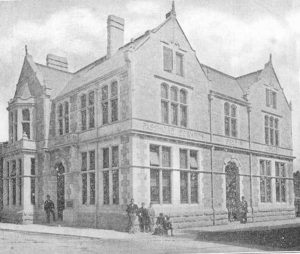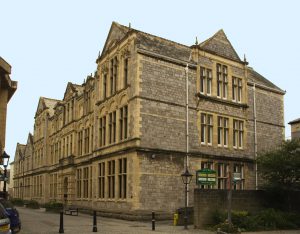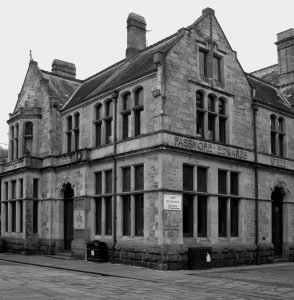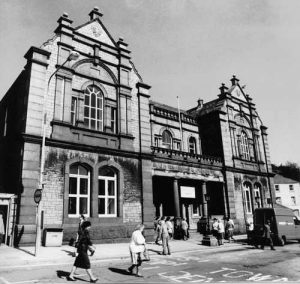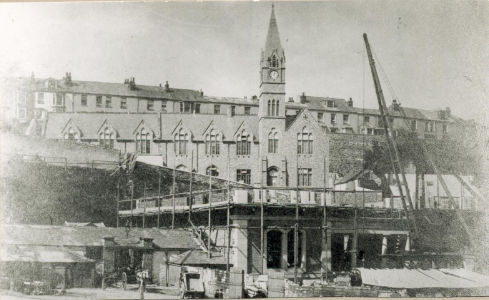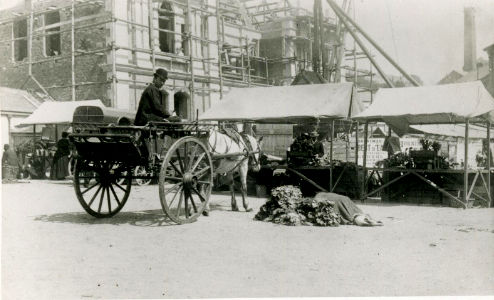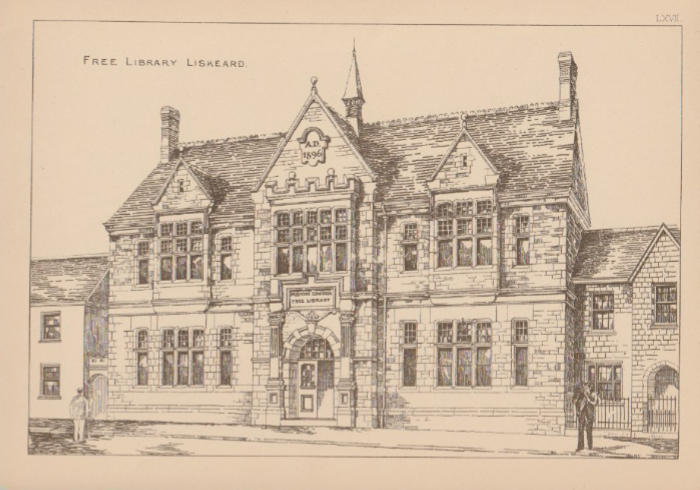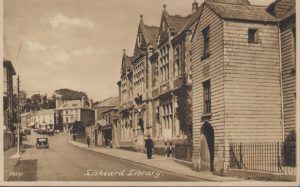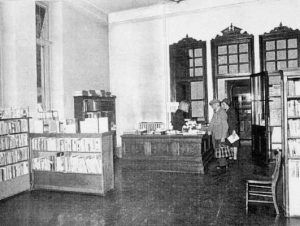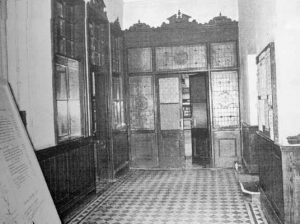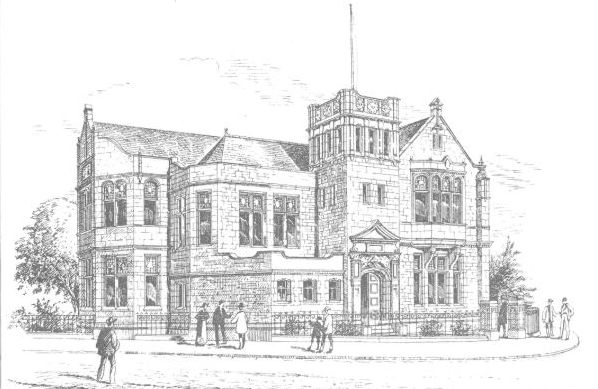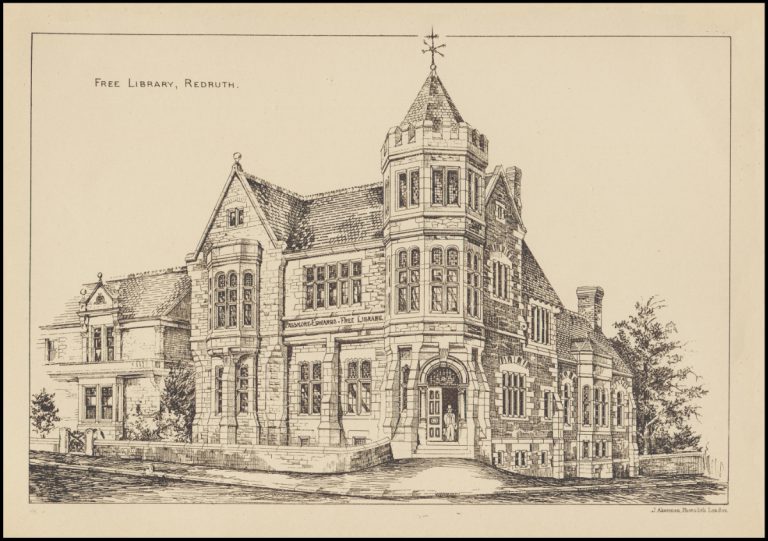More than once Passmore Edwards questioned Launceston’s enthusiasm for a library and the local Council’s commitment to its maintenance. The building has now been converted for use as apartments.
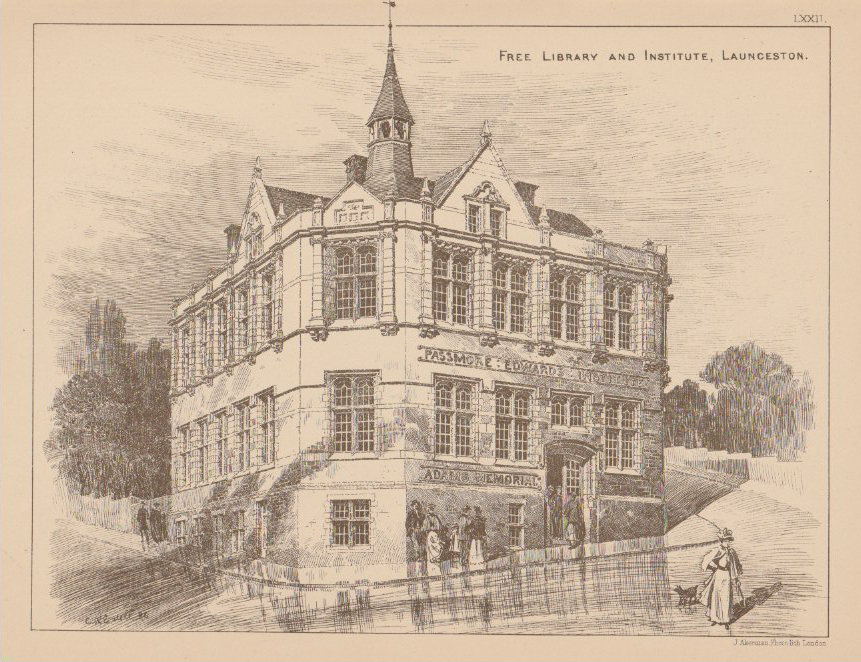
History
In February 1898 the Mayor of Launceston received a letter from Passmore Edwards asking what progress had been made towards building the library. It had been 3 years since the offer had been made and they had got no further than selecting a site. The Council’s response was to say that the County Council had agreed to use the upper floor as a Technical school and to ask that Edwards condition that the Town secured £500 for furnishing and maintenance be relaxed to £300.
This brought an almost immediate response.
Your letter was somewhat reassuring though you have not complied with the reasonable condition indicated in my last letter. I have no desire to back out of any promise I have made but I shall not like to provide another public building in Cornwall with such lack of zeal and smallness of practical result as seen in some other places in the county. Had I known a few years since what I know now, I should have spent less money in Cornwall and more in London. My wish is to benefit the largest number of my countrymen and experience has taught me that but few comparatively are benefited in Cornwall by what I have done there. But I will hope for the best. I cannot consent to reduce the cost of the building to £1500. When I consented that £200 of the £2000 should be devoted to equipment and books the conditions were different. The new site will entail more cost in the construction and one half of the building is to be devoted to arts and science. You will need to spend at least £2000. Get on with it!
Time passes and life is short, or at all events, for some of us, and I want to do the most in the least time and to get the maximum of good for the minimum of expenditure.
Problems at Launceston had arisen from the beginning. Passmore Edwards appointed Trevail as architect without reference to the council and left it to him to tell them. This he did by inserting a public notice in the local paper, immediately establishing a difficult relationship with the Council and a stream of offers of potential sites. Each site needed checking, surveying and sketches produced to put to the Council. And each Councillor on the building committee had his favoured site and wanted to put his penny worth in to the library design. To save costs Trevail’s proposed bell tower was deleted and the library restricted to the ground floor, the upper floor to be given over to technical education.
The final gift from Passmore Edwards to the people of Cornwall, the last of the nineteen stepping-stones stretching the length of Cornwall, as many stones as there were letters in Edwards’ name, opened in April 1900. Set into the front of the building, in Terracotta, were the words Passmore Edwards Institute at first floor level, to represent the art and science school and Adams Memorial representing the library. John Couch Adams, the mathematician and astronomer, joint discoverer of the Planet Neptune, was born near Launceston. Edwards had previously wanted to build a lighthouse in memory of Adams but had to be content with the library and a marble bust of Adams presented to the library.
It is a very attractive building of terracotta and local Polyphant stone. Trevail utilised terracotta in several of his buildings and secretly received a commission from the supplier, Henry Dennis, the owner of the Ruabon Clay works. On the ground floor three rooms housed the library, newspaper room and magazine room whilst on the first floor there were four rooms to be used for arts and science classes. Accommodation for the caretaker was provided in the basement.
Current Use
Sadly, the last of the Passmore Edwards libraries to open in Cornwall was also the first to close. In April 1971, concerned with increasing maintenance costs, the County Council moved the library service to a new building in Bounsall’s Lane. The Adams Memorial building has since been converted into residential apartments.
